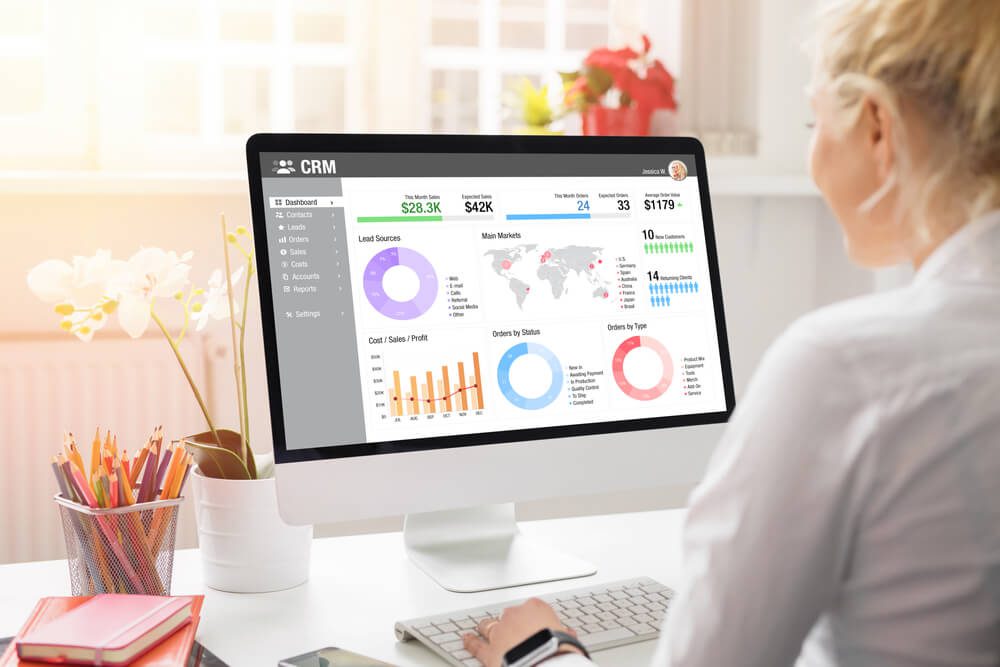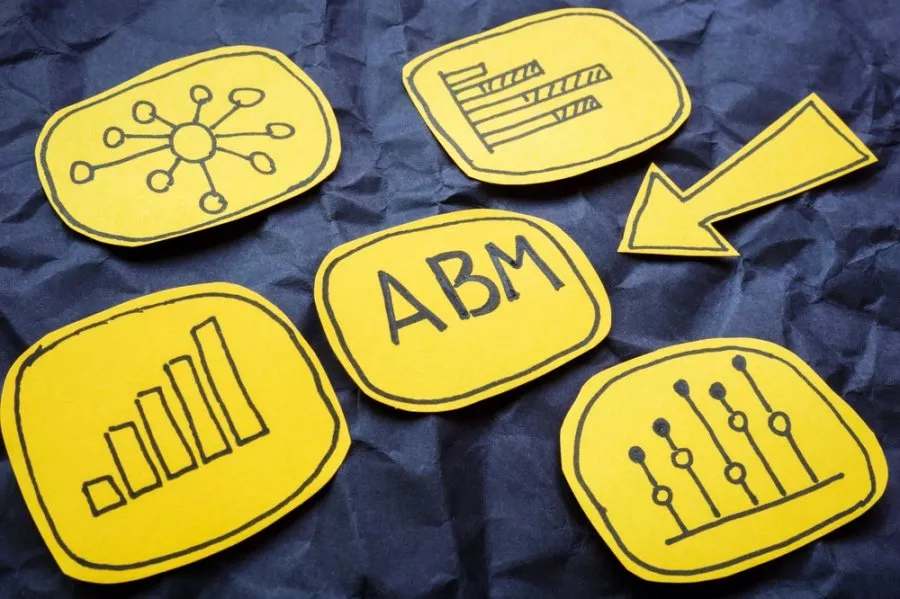
Lead Generation Lists: Which Is Best? Build vs Buying
Many marketers and C-suite executives get stumped with lead generation. In particular, should they build a list or buy it?
This blog post helps you find the answer and develop a more informed choice that aligns with your goals:
 A lead generation list is a collection of data about your target audience. It can be people (if you are engaged in B2C) or companies (if you are in the B2B market).
The list can be basic, containing only the names and email addresses. A good example is a mailing list of your email or newsletter subscribers. It may also be comprehensive. For instance, the information includes job titles, incomes, phone numbers, and geographical locations.
Depending on the collection method, the list might also have the following features:
A lead generation list is a collection of data about your target audience. It can be people (if you are engaged in B2C) or companies (if you are in the B2B market).
The list can be basic, containing only the names and email addresses. A good example is a mailing list of your email or newsletter subscribers. It may also be comprehensive. For instance, the information includes job titles, incomes, phone numbers, and geographical locations.
Depending on the collection method, the list might also have the following features:
 The list you build yourself is usually zero- or first-party data, or both:
The list you build yourself is usually zero- or first-party data, or both:
 When you buy a lead list, the data is already available. However, what kinds of information does it contain? Where does the information come from?
When you buy a lead list, the data is already available. However, what kinds of information does it contain? Where does the information come from?
- What is a lead generation list?
- The pros and cons of building and buying it.
- Tough questions to ask a lead generation agency.
- Factors to consider when choosing between developing and purchasing the list.
What Is a Lead Generation List?
 A lead generation list is a collection of data about your target audience. It can be people (if you are engaged in B2C) or companies (if you are in the B2B market).
The list can be basic, containing only the names and email addresses. A good example is a mailing list of your email or newsletter subscribers. It may also be comprehensive. For instance, the information includes job titles, incomes, phone numbers, and geographical locations.
Depending on the collection method, the list might also have the following features:
A lead generation list is a collection of data about your target audience. It can be people (if you are engaged in B2C) or companies (if you are in the B2B market).
The list can be basic, containing only the names and email addresses. A good example is a mailing list of your email or newsletter subscribers. It may also be comprehensive. For instance, the information includes job titles, incomes, phone numbers, and geographical locations.
Depending on the collection method, the list might also have the following features:
- Lead segmentation based on certain criteria (e.g., level of online engagement or purchase behavior).
- Enhanced data points, often gathered from various sources or through integrations.
- Source tracking, indicating the sources of the data.
- Lead generation metrics (e.g., email opens, website visits, or downloaded content).
- Easy integration with other platforms, especially customer relationship management (CRM) tools or email marketing apps.
- Allowing businesses to customize their content to enhance the user experience (UX) and boost engagement.
- Building long-lasting relationships so that these leads ultimately become brand advocates.
- Optimizing market spending and prioritizing outreach with high-quality leads (those who have shown interest and can buy).
- Enabling a more effective collaboration between sales and marketing teams.
- Streamlining lead generation campaigns.
- Quickly scales digital marketing efforts, especially among small- and medium-sized businesses (SMBs).
Building Lead Lists: The Organic Way
 The list you build yourself is usually zero- or first-party data, or both:
The list you build yourself is usually zero- or first-party data, or both:
- Zero-party data means that your customers or prospects proactively or voluntarily provide their personal information or preferences to you. For example, they signed up for a membership card or answered an online quiz to receive a report through email.
- First-party data is information from your audience and their interactions with your brand or online marketing channels. These include website traffic or visits, duration of sessions, and CRM or data analytics results.
- It puts you in the driver’s seat, meaning you have more control over the collection and use of the information.
- Handpicked leads align more closely with your target audience, ensuring a better fit and higher conversion probabilities.
- The data is more likely to be fresh and more relevant. In other words, they are more useful in your decision-making strategies.
- It gives you a closer, more authentic look at your audience. Are your marketing tactics attracting the right people?
- The legal risks, such as invasion of privacy or spamming, are low.
- You can quickly refine your lead generation activities by seeing the real-time data.
Buying Lead Lists: The Expedited Path
 When you buy a lead list, the data is already available. However, what kinds of information does it contain? Where does the information come from?
When you buy a lead list, the data is already available. However, what kinds of information does it contain? Where does the information come from?
- These lists usually contain third-party datasets. They have been aggregated from various external sources that might not connect to your business. However, the details might still be useful in your campaigns.
- Sometimes they are second-party information, which is data obtained from partnerships with other similar or like companies. For example, a travel agency and a hotel chain agree to share leads. Another is when a car manufacturer buys a list from an auto magazine to know subscribers’ preferences.
15 Questions to Ask When You Want to Buy a List
Although first- and zero-party data seem more reliable, second- and third-party data can offer scale and external insights. However, they should comply with federal and state laws, guarantee accuracy and relevancy, and help you build a good relationship with your leads. Learn to ask the right questions before buying the list:- Where did you get the leads? How did you generate them?
- How fresh are the leads? What is the age of the list?
- Have you verified the data? Have they been cleaned?
- Can I segment or filter the list based on specific criteria (e.g., location, job title, industry)?
- Do you have detailed profiling for each lead?
- Did you obtain consent from these people? How did you do it?
- Can you offer proof of opt-in?
- Is the list compliant with regulations such as CAN-SPAM or other relevant data protection and privacy laws?
- Do you provide information or guidance on how to compliantly use the list?
- How many other businesses have purchased this list? Will this list be sold to my competitors?
- What is your refund policy for inaccurate leads?
- Can you provide references or case studies from businesses that have successfully used your lists?
- How long can I use the leads?
- Do you have any restrictions on multiple uses or channels of communication?
- Will you provide support if I have issues with the list?
Summing Up
Buying or building a list hinges on your business needs, market positioning, resource availability, and strategic vision. It helps to approach this decision with an open mind, weighing both short-term gains and long-term value. Remember, though, your leads are more than a list. They represent people who want your attention, relationships, transparency, and authenticity. If you need guidance or support with lead generation, Digital Authority Partners (DAP) is here to help. Through innovation and technical expertise, we have increased the leads of a fintech company by 41% through cold outreach emails and by 81% year over year for a long-standing leader in environmental monitoring. We have the skills and proof.Want To Meet Our Expert Team?
Book a meeting directly here



